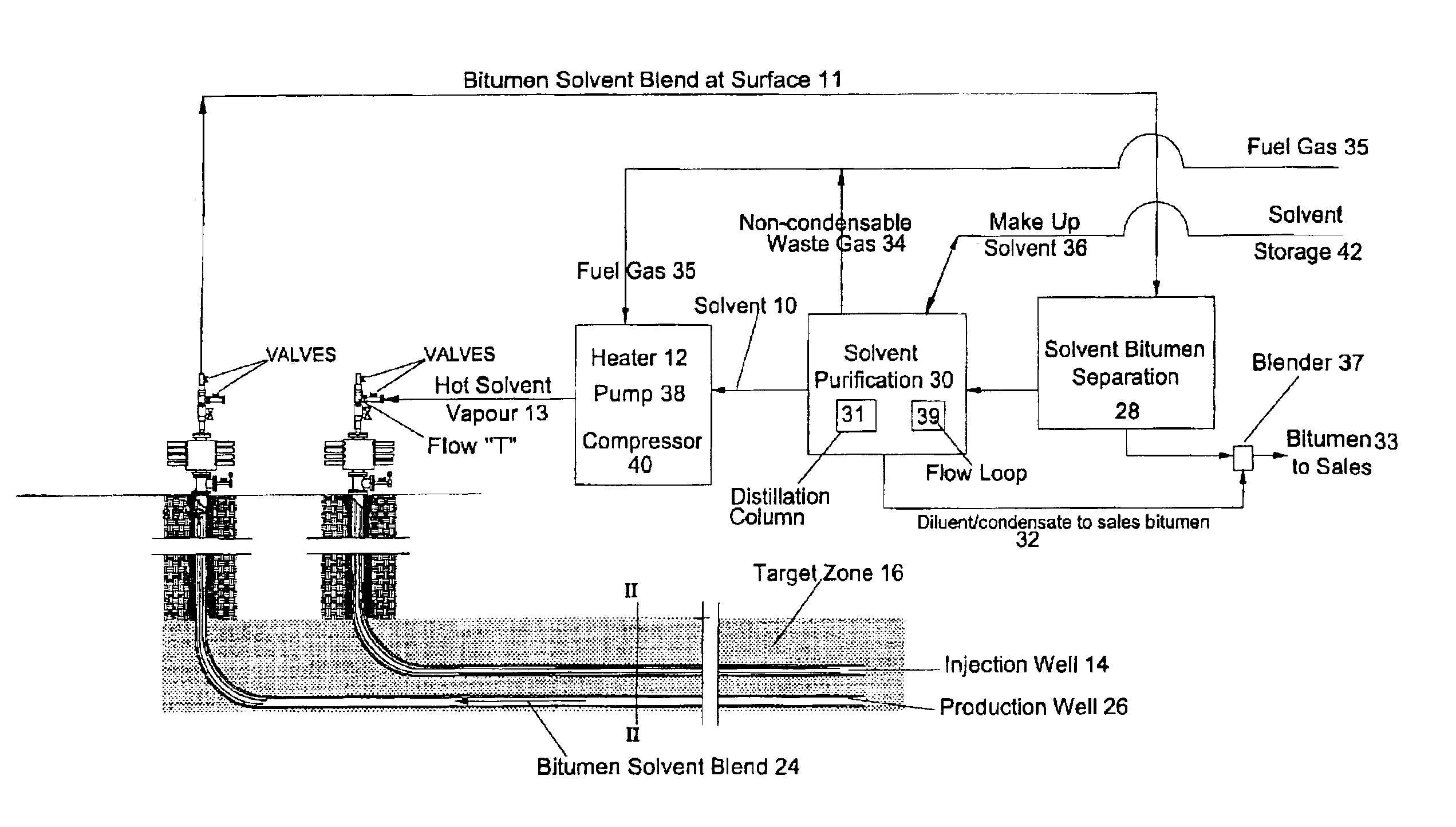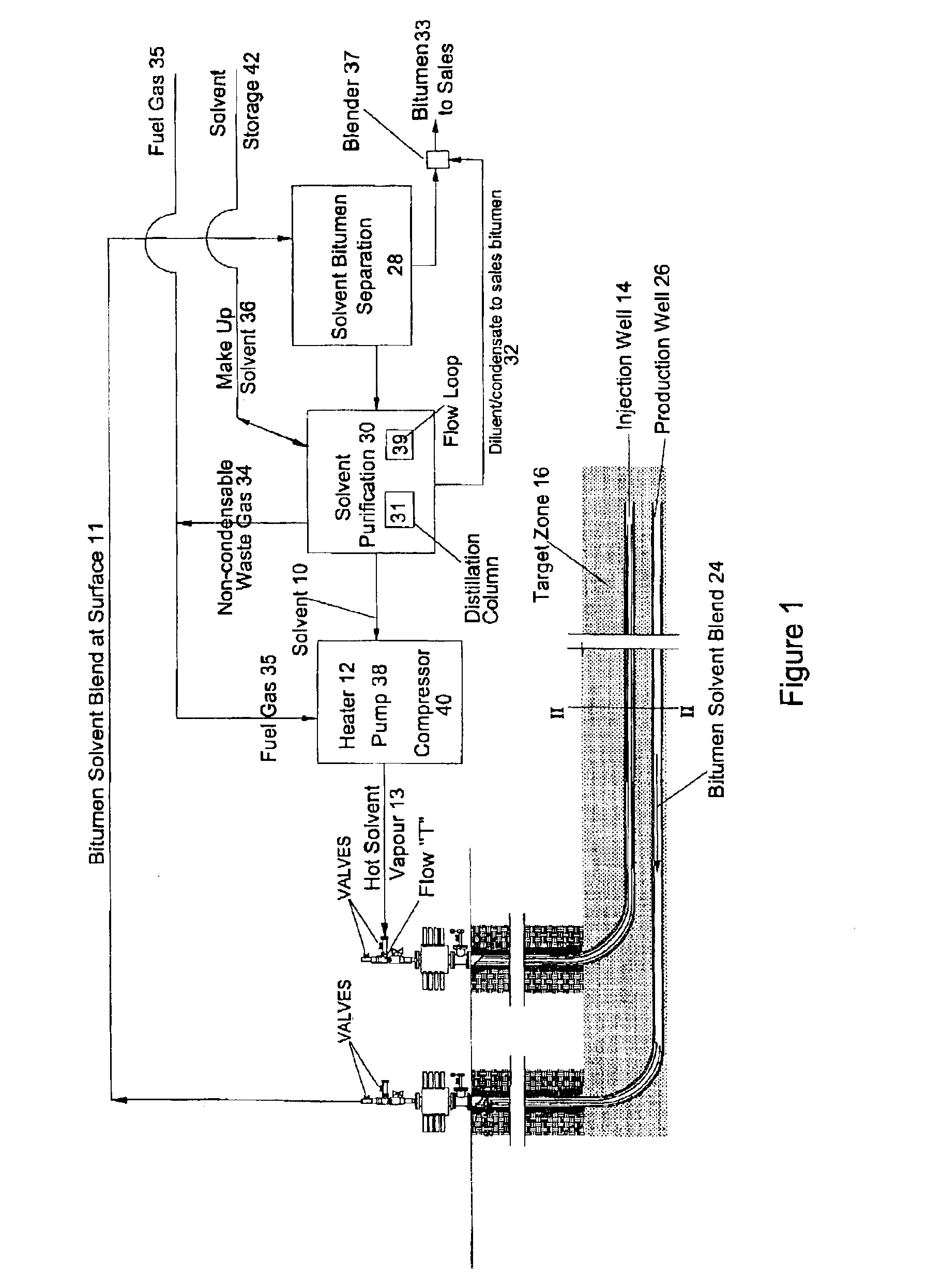Method and apparatus for stimulating heavy oil production
a technology of heavy oil and apparatus, applied in the field of resource extraction, can solve the problems of difficult extraction of oil from typically tightly packed sand formations, heat loss, and release of greenhouse gases such as carbon dioxide, and achieve the effects of increasing interfacial contact area, rapid extraction of bitumen, and promoting solvent penetration
- Summary
- Abstract
- Description
- Claims
- Application Information
AI Technical Summary
Benefits of technology
Problems solved by technology
Method used
Image
Examples
Embodiment Construction
[0036]FIG. 1 shows the general elements for a recovery process according to the present invention. In some respects the elements are similar to that shown in earlier patent application 2,299,790. However, as is explained in more detail below, the recovery process of the present invention includes several key improvements.
[0037]FIG. 1 shows a solvent 10 being heated above grade 11 in a heater 12. The hot solvent 13 is injected down the injection well 14 into the recovery reservoir 16. In this specification the term “solvent” means a compound which dissolves into and thus, reduces the viscosity of, naturally occurring hydrocarbons in the recovery formation. The preferred solvent is capable of being heated to a vapour state at recovery pressure so as to condense at a recovery face in the formation. A preferred solvent is a C3 to C5 hydrocarbon such as propane, propylene, butane, pentane or the like. The most preferred solvent is propane. The present invention comprehends that the solve...
PUM
| Property | Measurement | Unit |
|---|---|---|
| temperature | aaaaa | aaaaa |
| distances | aaaaa | aaaaa |
| pressure | aaaaa | aaaaa |
Abstract
Description
Claims
Application Information
 Login to View More
Login to View More - R&D
- Intellectual Property
- Life Sciences
- Materials
- Tech Scout
- Unparalleled Data Quality
- Higher Quality Content
- 60% Fewer Hallucinations
Browse by: Latest US Patents, China's latest patents, Technical Efficacy Thesaurus, Application Domain, Technology Topic, Popular Technical Reports.
© 2025 PatSnap. All rights reserved.Legal|Privacy policy|Modern Slavery Act Transparency Statement|Sitemap|About US| Contact US: help@patsnap.com



